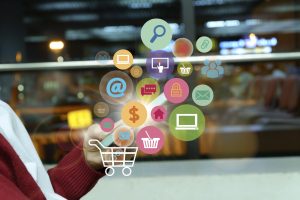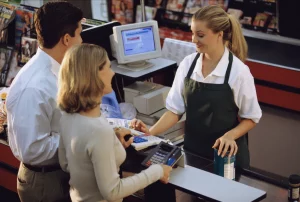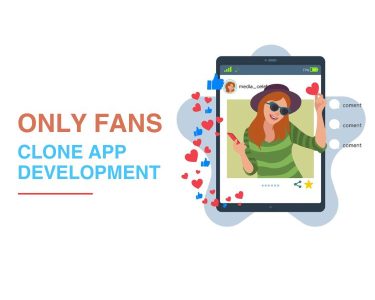The retail industry has undergone a significant transformation over the past decade, driven by rapid technological advancements. From online shopping to personalized marketing, technology is reshaping the way retailers interact with customers, manage operations, and drive sales. This article explores the latest tech innovations in retail and how they are enhancing the customer experience.
E-commerce and Mobile Commerce

The rise of e-commerce has been one of the most significant changes in the retail landscape. With the advent of the internet, shopping has become more convenient, accessible, and personalized. E-commerce platforms like Amazon, Alibaba, and eBay have revolutionized the way people shop, offering a vast array of products and services at the click of a button.
Benefits of E-commerce
- Convenience: Customers can shop from the comfort of their homes, avoiding the hassle of crowded stores and long queues.
- Wide Selection: E-commerce platforms offer a vast selection of products, often more than what is available in physical stores.
- Personalization: Advanced algorithms track customer behavior and preferences, offering personalized recommendations and promotions.
- 24/7 Availability: Online stores are open around the clock, providing customers with the flexibility to shop at any time.
Mobile Commerce
With the proliferation of smartphones, mobile commerce (m-commerce) has gained traction. Retailers are optimizing their websites and developing mobile apps to provide a seamless shopping experience on mobile devices. Features like mobile payments, push notifications, and location-based services enhance the customer experience and drive sales.
Augmented Reality (AR) and Virtual Reality (VR)
AR and VR are transforming the retail industry by providing immersive and interactive shopping experiences. These technologies bridge the gap between online and in-store shopping, allowing customers to visualize products in a real-world context.
Augmented Reality
AR overlays digital information onto the physical world, enhancing the shopping experience. For example, IKEA’s AR app allows customers to see how furniture would look in their homes before making a purchase. Similarly, beauty brands like Sephora use AR to enable customers to virtually try on makeup.
Virtual Reality
VR provides a fully immersive experience, allowing customers to explore virtual stores or try products in a simulated environment. For example, Alibaba’s VR shopping experience lets customers walk through a virtual mall and make purchases as if they were physically present.
Artificial Intelligence (AI) and Machine Learning (ML)
AI and ML are revolutionizing the retail industry by enabling personalized experiences, optimizing inventory management, and improving customer service.
Personalized Shopping Experience
AI-powered recommendation engines analyze customer data to provide personalized product recommendations. This not only enhances the shopping experience but also increases sales and customer loyalty. For example, Amazon’s recommendation engine accounts for a significant portion of its sales.
Chatbots and Virtual Assistants
AI-powered chatbots and virtual assistants provide instant customer support, answering queries and guiding customers through the shopping process. These tools improve customer satisfaction by providing quick and accurate responses. For example, H&M’s chatbot helps customers find products, check availability, and track orders.
Inventory Management
AI and ML algorithms optimize inventory management by predicting demand and managing stock levels. This reduces the risk of overstocking or stockouts, ensuring that customers can find the products they want. For example, Zara uses AI to analyze sales data and adjust its inventory accordingly.
Internet of Things (IoT)

IoT is transforming the retail industry by connecting physical objects to the internet, enabling real-time data collection and analysis.
Smart Shelves
Smart shelves equipped with sensors track inventory levels and notify staff when items need to be restocked. This ensures that products are always available for customers, reducing the risk of lost sales. For example, Walmart uses smart shelves to monitor inventory levels and optimize restocking.
Beacons
Beacons are small devices that use Bluetooth technology to send notifications to customers’ smartphones when they are near a store or a specific product. This enables retailers to provide personalized offers and promotions based on the customer’s location. For example, Macy’s uses beacons to send personalized offers to customers as they walk through the store.
Blockchain
Blockchain technology is transforming the retail industry by providing transparency, security, and efficiency in supply chain management and payment processing.
Supply Chain Transparency
Blockchain enables retailers to track products from the manufacturer to the customer, providing transparency and ensuring product authenticity. This is particularly important for industries like food and pharmaceuticals, where product safety is critical. For example, Walmart uses blockchain to track the origin of food products, ensuring their safety and authenticity.
Secure Payments
Blockchain technology provides a secure and efficient way to process payments, reducing the risk of fraud and improving transaction speed. Cryptocurrencies like Bitcoin and Ethereum are gaining traction as payment methods in the retail industry. For example, Overstock.com accepts Bitcoin as a payment method, providing customers with a secure and efficient way to make purchases.
Competitive Table
| Company | Tech Innovations Implemented | Key Features | Customer Experience Impact |
| Amazon | AI-powered recommendations, drones, Alexa | Personalized shopping, fast delivery, voice shopping | Enhanced personalization, convenience, and efficiency |
| Walmart | Smart shelves, blockchain, mobile app | Real-time inventory, supply chain transparency, mobile payments | Improved product availability, trust, and convenience |
| Alibaba | VR shopping, AI, big data analytics | Immersive shopping, personalized recommendations | Innovative shopping experience, tailored offers |
| IKEA | AR app, AI recommendations, mobile app | Virtual furniture placement, personalized suggestions | Enhanced visualization, personalized shopping |
| Sephora | AR makeup try-on, AI chatbots, mobile app | Virtual try-on, instant customer support | Interactive experience, improved customer service |
Analysis Table
| Aspect | Traditional Retail | Tech-Enhanced Retail |
| Shopping Experience | In-store browsing, limited personalization | Personalized recommendations, immersive AR/VR |
| Customer Support | In-person or phone support | AI-powered chatbots, instant virtual assistance |
| Inventory Management | Manual tracking, risk of stockouts | Real-time smart shelves, AI-driven optimization |
| Payment Methods | Cash, credit/debit cards | Mobile payments, cryptocurrencies, secure blockchain transactions |
| Marketing | Broad advertising campaigns | Targeted, personalized marketing using data analytics |
Conclusion
Tech innovations are reshaping the retail industry, enhancing the customer experience in unprecedented ways. E-commerce and mobile commerce provide convenience and accessibility, while AR and VR offer immersive and interactive shopping experiences. AI and ML enable personalized shopping, improve customer support, and optimize inventory management. IoT enhances real-time data collection and analysis, improving inventory management and personalized marketing. Blockchain ensures supply chain transparency and secure payments, building trust and efficiency.
As technology continues to evolve, retailers must adapt and embrace these innovations to meet changing customer expectations and stay competitive. By leveraging the latest tech innovations, retailers can provide a seamless, personalized, and engaging shopping experience that meets the needs of today’s tech-savvy consumers.




